Last month I was able to join a amazing contest, and luckily my work got a recognition and got a curie vote. Even if I did not won, I was really happy a able get a @curie vote and many people love and appreciate my work. You can check it here .The purpose of the contest was just not only to produce quality artwork, but also to help raise awareness about our current issue and problem we are dealing right now, particularly about growing numbers of trashes and garbage polluting our seas. This contest also aims to encourage every individual to be really serious about proper waste management and to be responsible in keeping one's own wastes. So I decided to continue the mission, to spread the word about this issue that continually being taken for granted. Since I have this God given talent, why not use it bring message that will help spread social awareness in the community through my Art! That's what it's all about, using art to "TO TELL", "TO HELP", "TO ENCOURAGE", "TO INSPIRE", and "TO ADVOCATE".
So Here's my work
"Mythical Flower Horn"
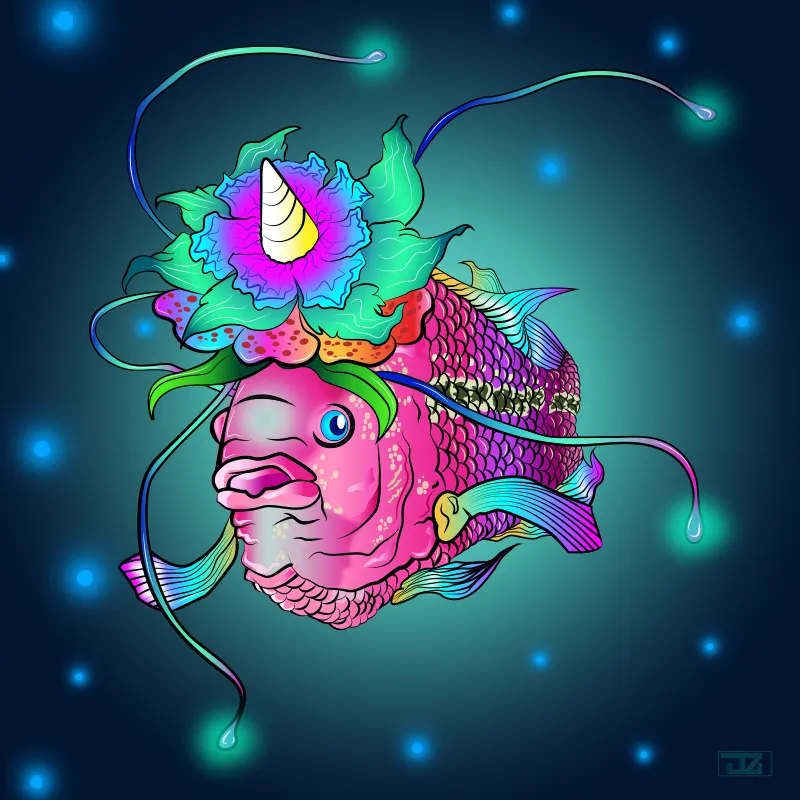
Inspiration
Are we all going to wait until the day, that everything will end up being a Myth?
I'm gonna start everything with that question. The subject of my illustration, if you're familiar, that is a "Flower Horn", which my favorite kind of pet fish. I've Illustrated it in a magical and mythical way, which I took literally and actually illustrated with Horn and a Flower. What I mean with that question is, are we all gonna wait until everything we have, marine life, will all come to extinction? (become a myth), because we all failed to preserve and protect all that we have, our treasure, our marine environment. And we don't want the time will come that our Sons and grandchildren will be asking us one day "Oh, that what a fish really look like?" while reading a book, or checking his/her phone. You get my point right? But it's not too late, we can still do something, and you have the power to make change. And I'm going to share things that will help us to be aware and to know the things we need to do, to prevent this future problems.
Here are the things that you need to know
Info About Wastes in the Seas
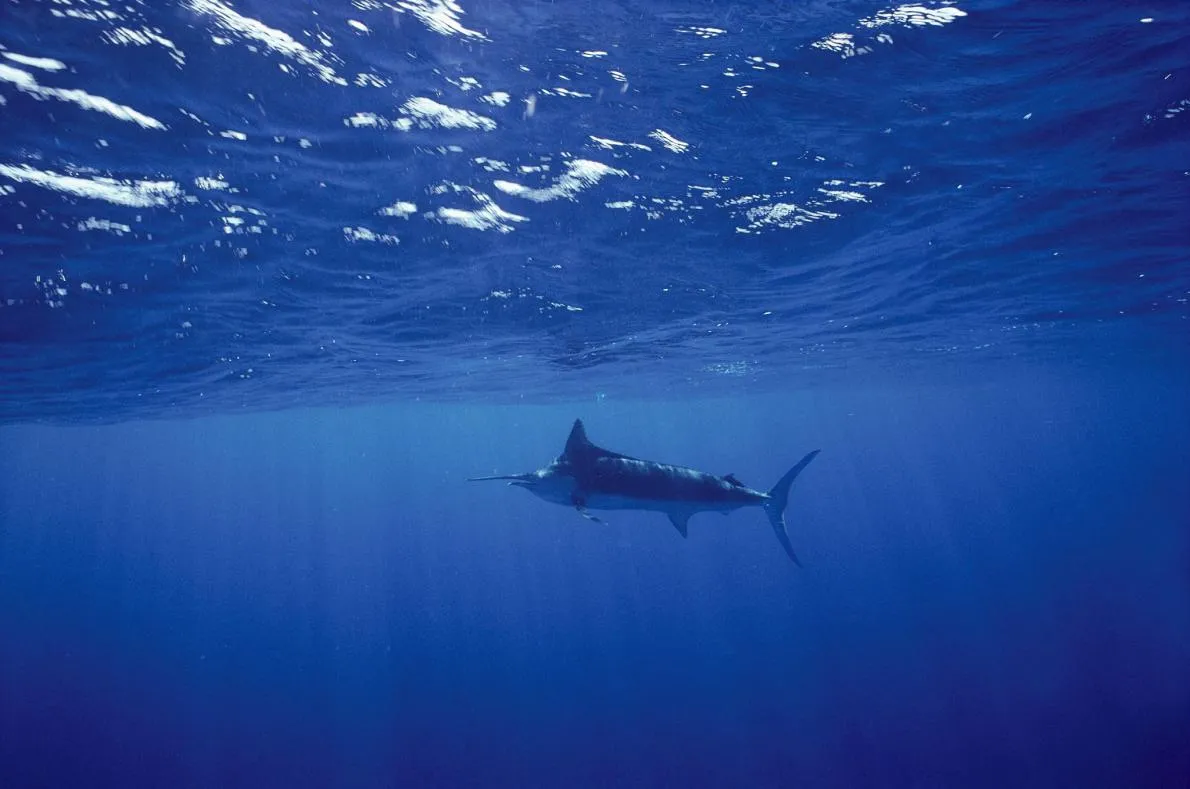
The ocean remains one among the foremost large, mysterious and various places on our planet. however as we’ve learned, it’s liable to one thing as straightforward because the human touch and influence.
Every day our oceans area being vulnerable by pollution and as you may expect, marine life is suffering at a sinister rate
The statistics to support this? Is quite alarming.
Ocean pollution affects over 817 animal species round the world, a figure that has raised 23 percent within the last five years alone.
Causes and Factors of Ocean Pollution

The majority of the waste we tend to produce ashore eventually reaches the oceans, whether or not intentional or not — and there are numerous ways that} by which this thing ends up.
-Littering
-Sewage
-Ocean mining
-Oil spills
-Agricultural runoff
-Toxic chemicals
-Air pollutants
-Maritime transportation
Effect of Ocean Pollution
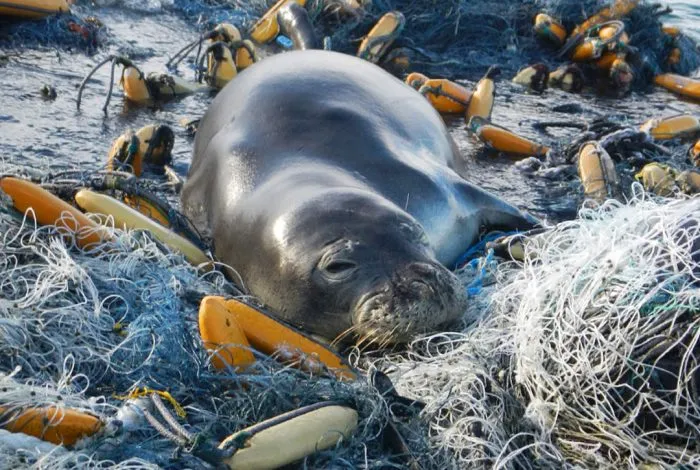
-Deviation of oxygen content in the water
-Result of toxic wastes on marine animals
-Loss in the reproductive system of marine animals
-Spoilation of food chain
-Negative side effects on human health
-Alteration to the cycle of coral reefs
Ocean Pollution Facts
If you, I, and people around the word are to preserve our oceans, strong implacation got to be taken to overcome this pollution, that had been disturbing our bodies of water and marine environment.
Below are some overwhelming facts that demonstrate the damount and severity of the problem, and why the answer depends on the little, everyday actions of people and business house owners around the world – as well as you.
Fact 1: Plastics square measure the foremost common component found within the ocean nowadays. Plastic above all is harmful to the environment because it doesn't break down simply and is commonly mistaken as food by marine animals.
Fact 2: According to a study done by the University of Georgia, eighteen billion pounds of plastic trash ends up in our oceans annually. To place that in perspective, it’s enough trash to hide each foot of coastline around the world with 5 full trash luggage of plastic…compounding per year.
Fact 3: The five most typical things found in coastal cleanups around the world are all single-use plastics. They are: plastic coffin nail butts, food wrappers, plastic nutrient bottles, plastic bottle caps, and plastic straws and drink stirrers.
Fact 4: There are twenty five trillion items of plastic trash within the ocean. Of that, 269,000 tons float on the surface, whereas some four billion plastic microfibers per sq. metric linear unit litter the deep ocean.
Fact 5: 80% of trash within the ocean is from land-based sources, as well as people in the community, trade and improper waste management/infrastructure. solely 20% is that the results of ocean-based sources, like the fishing, shipping, and ocean liner industries.
Fact 6: Plastics cause over 80% of the negative effects on animals related to ocean trash.
Fact 7: there's associate island of garbage doubly the scale of Texas within the Pacific Ocean: the Pacific roll off the coast of California is the largest oceanic garbage site within the entire world. It’s here that the amount of floating plastic items within the water outnumbers total marine life six to at least one within the immediate range.
Fact 8: Ocean pollution kills not counting one million sea birds each year.
Fact 9: A recent survey found ocean pollution is a lot of common in deep waters (more than 2,000 feet deep), with the foremost common offenders being plastic bags, metal cans, fishing instrumentation, glass bottles, shoes, tires, etc.
Fact 10: Analysis estimates anyplace from fifteen to fifty one trillion particles of floating micro plastic square measure in our oceans, consideration between 205-520 million pounds. This includes plastic microbeads (used as exfoliates in some aid products) and artificial fibers, each of that are too tiny to be filtered out by several waste water treatment plants.
Fact 11: Just about four billion pounds of trash each year enters the ocean.
Fact 12: around each square mile of ocean has over 45,000 debris of plastic floating in it.
Fact 13: There are dead zones within the oceans that are created by pollution creating life in those zones not possible for marine or plants.
Fact 14: Over 100,000 marine animals die per year from plastic entanglement and intake.
What You Can Do to Stop Future Ocean Pollution?
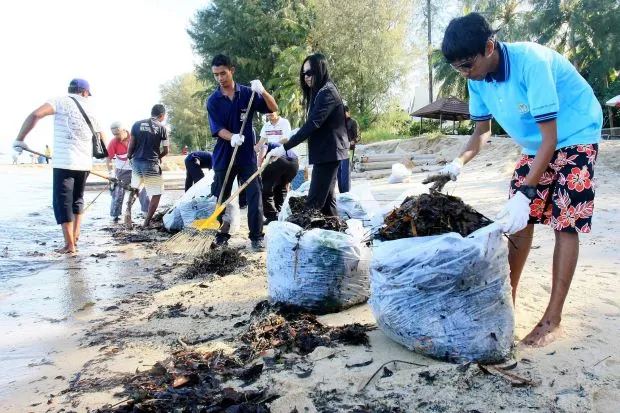
I believe that If we have the capability of causing and creating pollution to our marine environment. We also have the power and ability to make things right and make a change that will able our marine life to retain it's healthy state.
Here are things that you can do and practice
-Every time you see litter, no matter what it's, pick it up and properly dispose of it.
-Remember: Reduce. Reuse. Recycle. Reduce your usage of single-use plastics. Reuse plastic packaging as many times as you can. Recycle rather than throw away. And also I've as what I can recall, there is 4th R, which is "RESPECT", which I have heard and learned from Jacinta Sivilla (she is a environmental advocate and also uses her art for a cause, and a great Steemian too).
-As much as possible, avoid products with excessive and too much packaging
-Bring with you a reusable bag for shopping (i.e. grocery store, retail shops, etc.)
-If you are goint to buy/use a product that contains a plastic “six-pack” holder, be sure to cut it before throwing it. In the ocean there are tendencies that these rings may expand, and often times tangling or choking wildlife.
-Educate and teach these things, to those around you and don't have fear to talk trash to your friends and family. Because sometime it's hard for a to change if don't have an idea that what he is doing is wrong. so help spread the message.
And of course here's a little bit of process I've made
Process
First is, as usual I always start with a sketch, and Import it to Adobe Illustrator CC
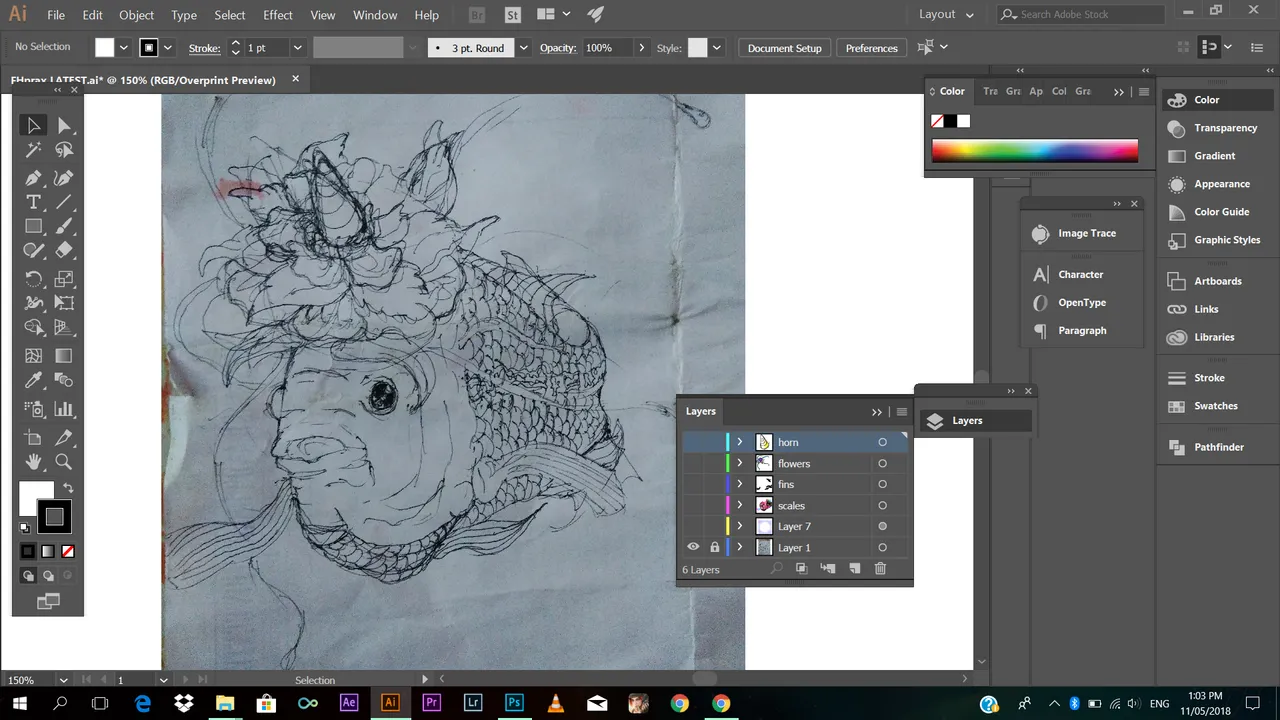
And start tracing it using Pentool
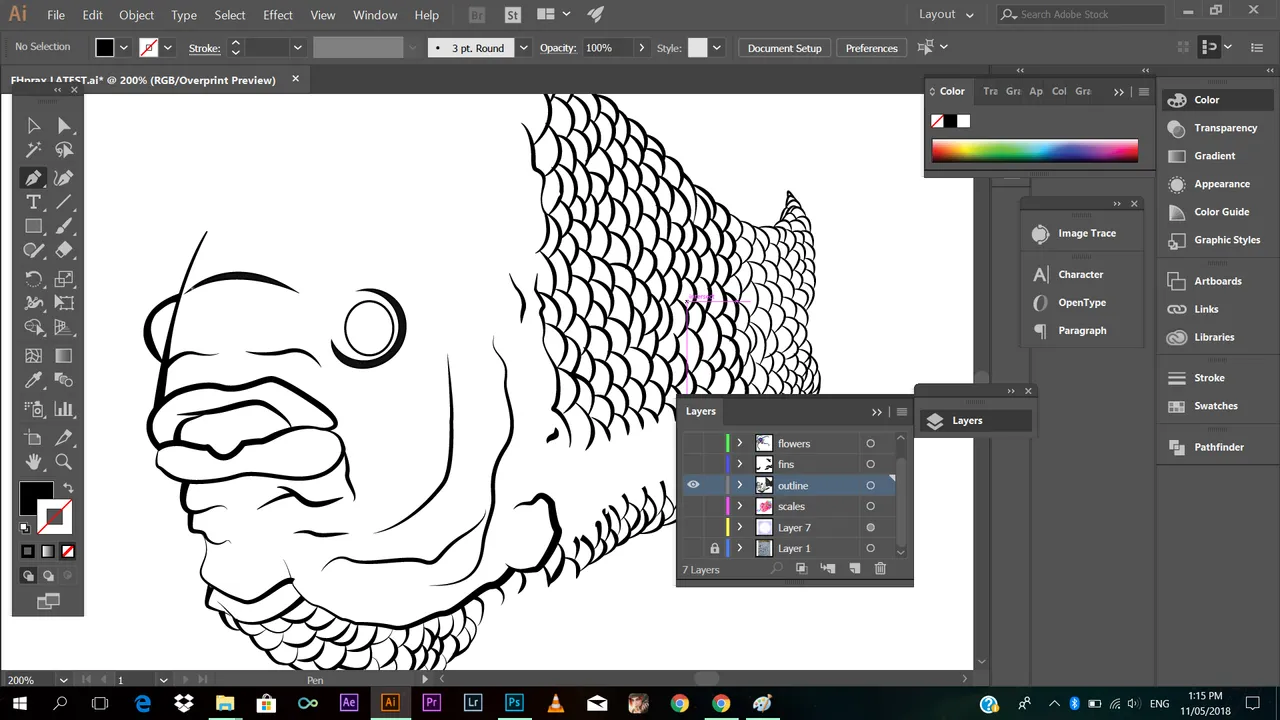
After that I start to add color, I've used gradient tool to achieve this effect.
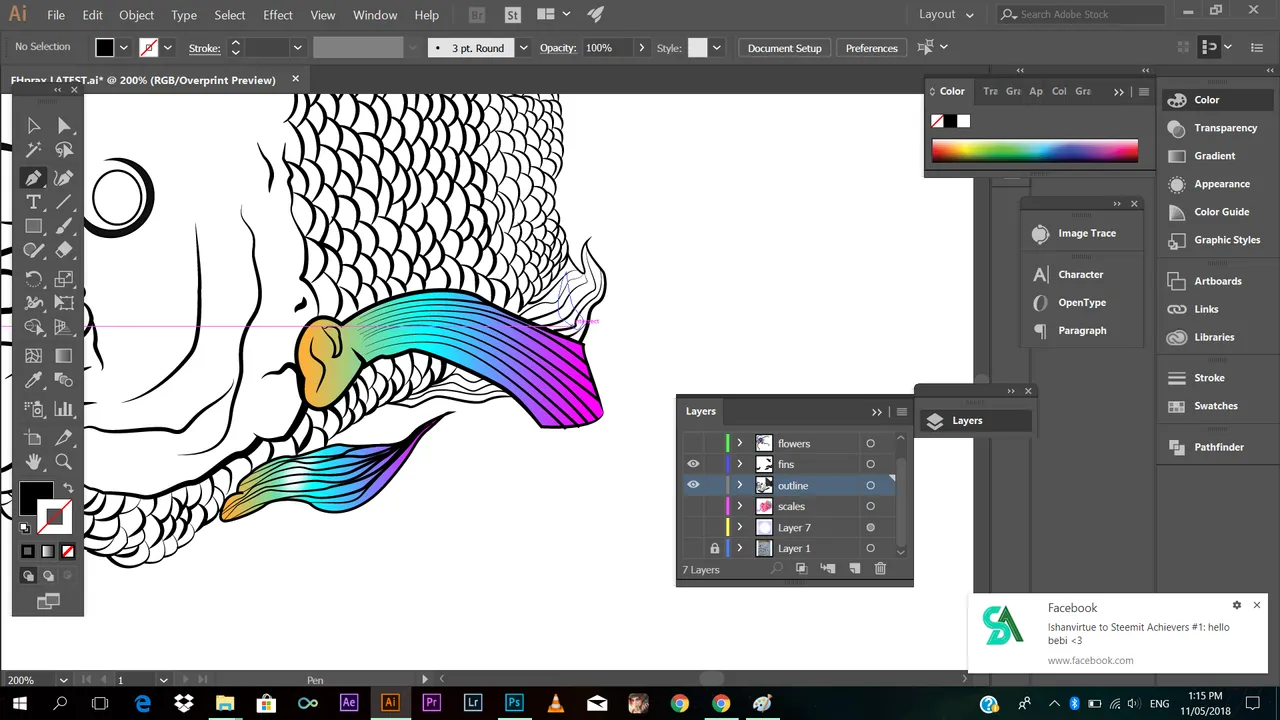
Adding color to every details...
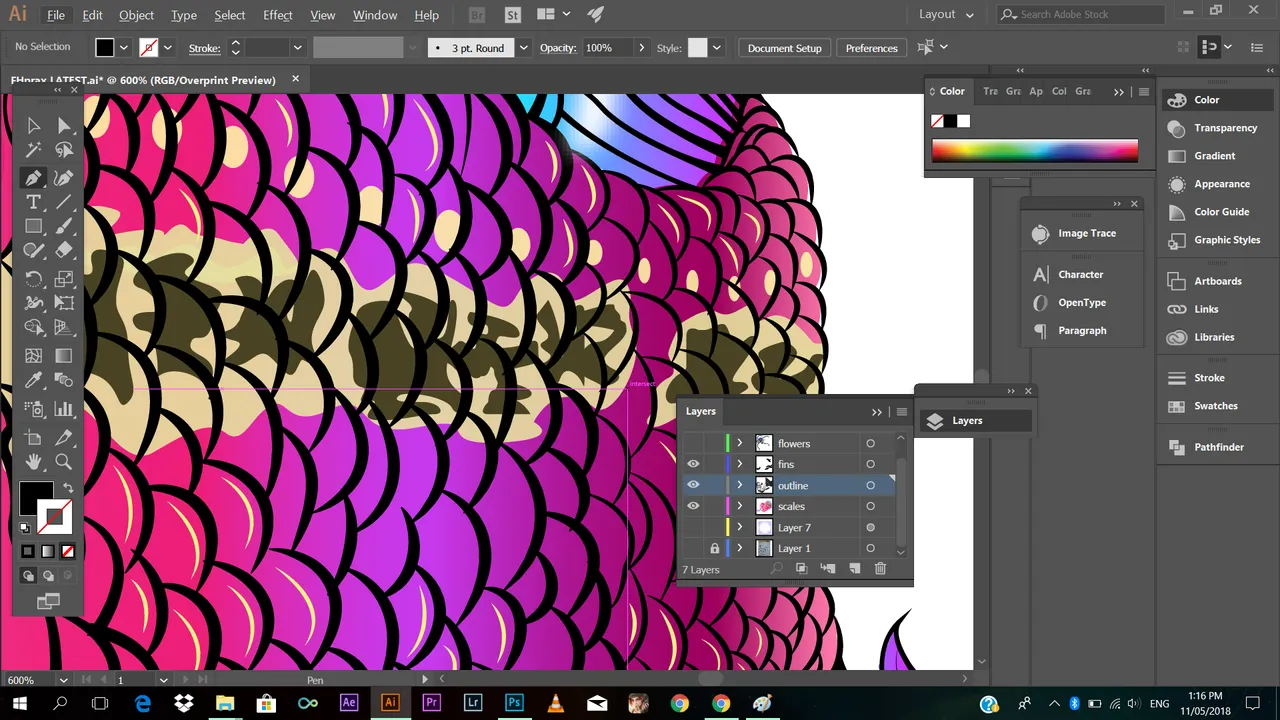
I really enjoyed coloring this one
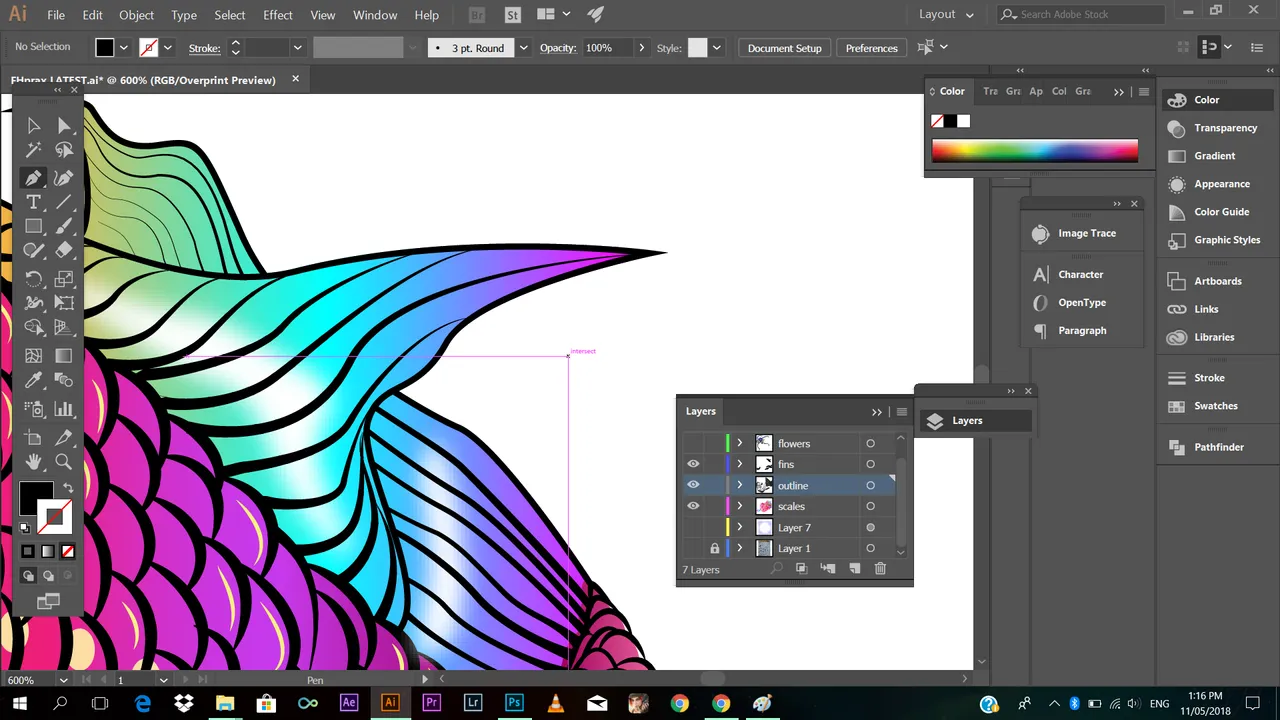
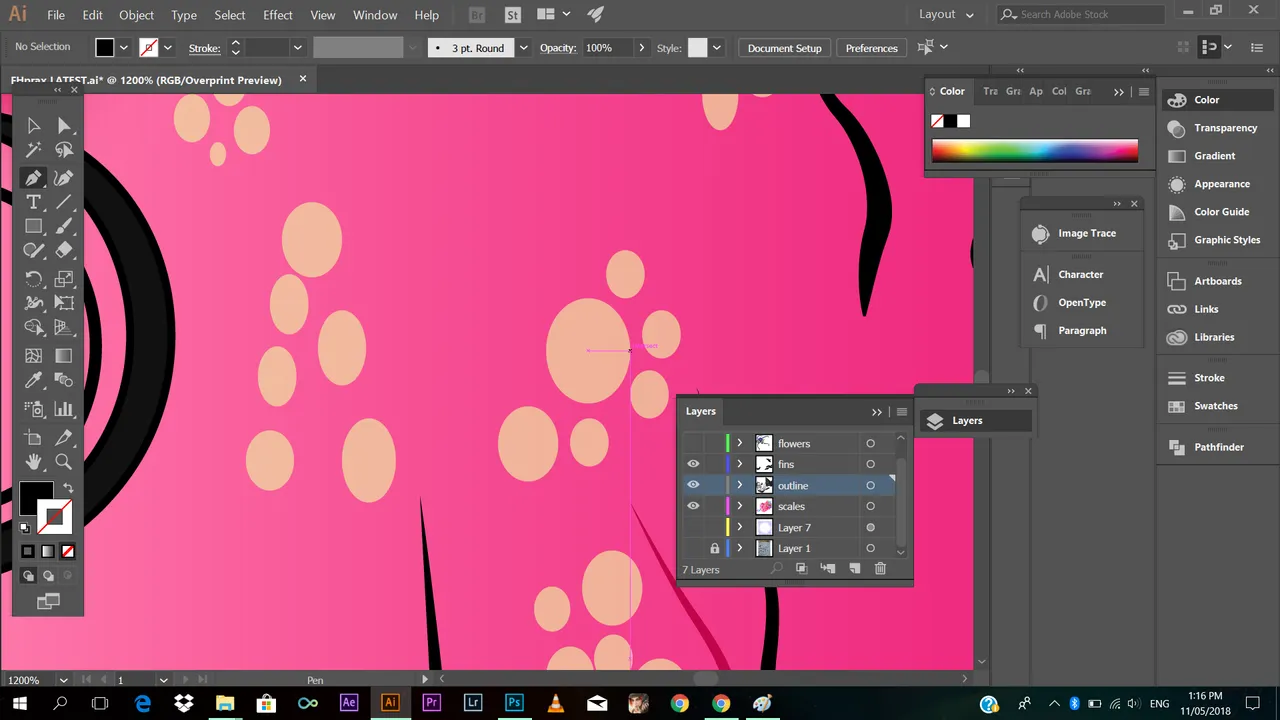
Love the flower...
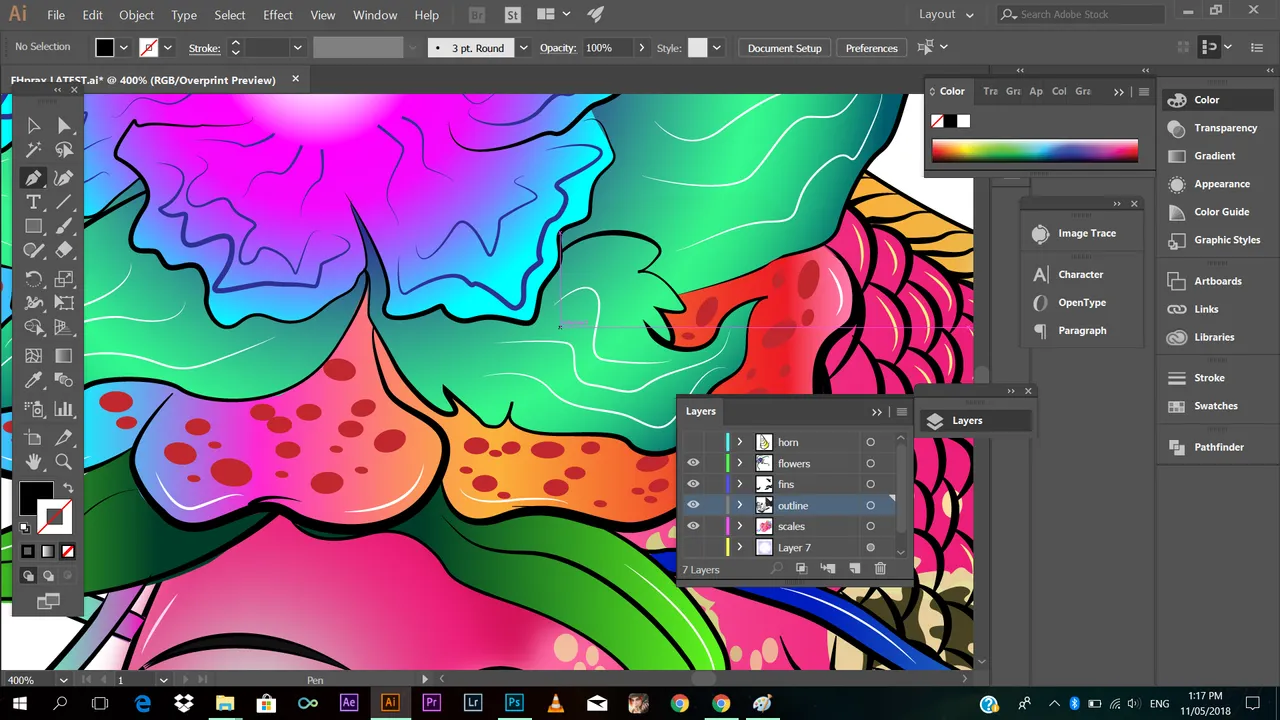
Adding a tentacle or vine that have a bulb like tip that's glowing, I don't now how to call this one, haha
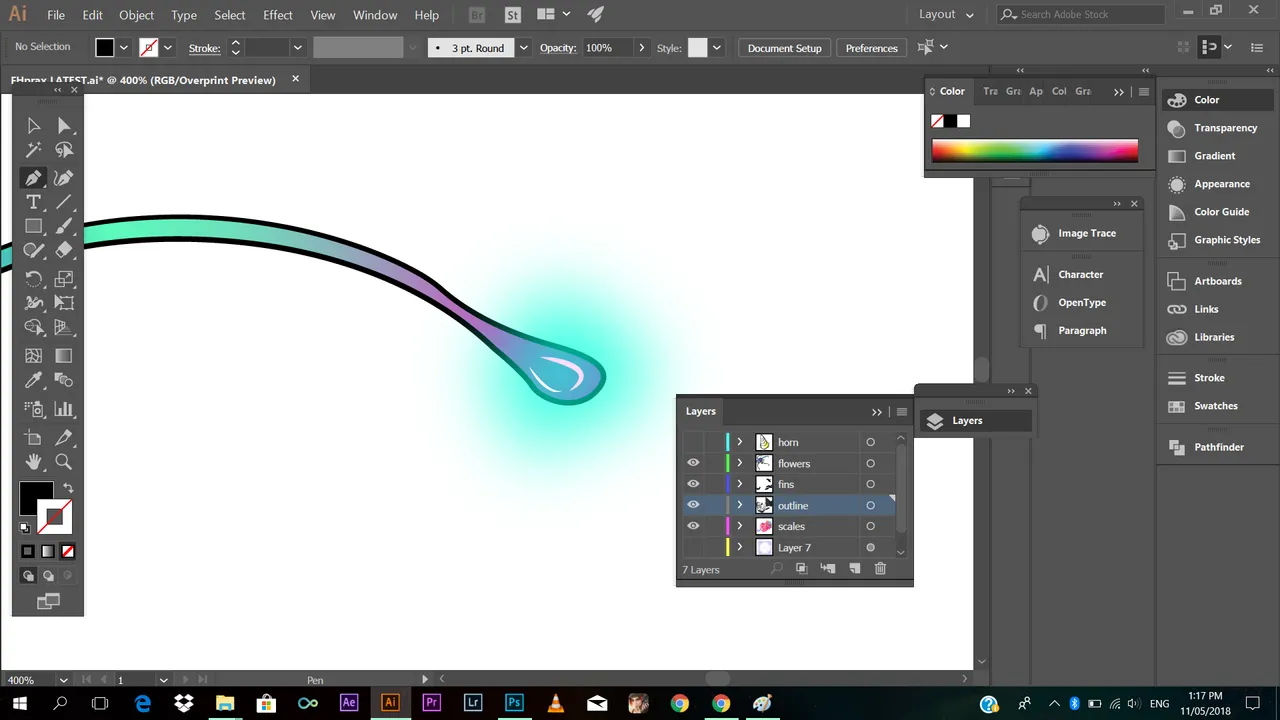
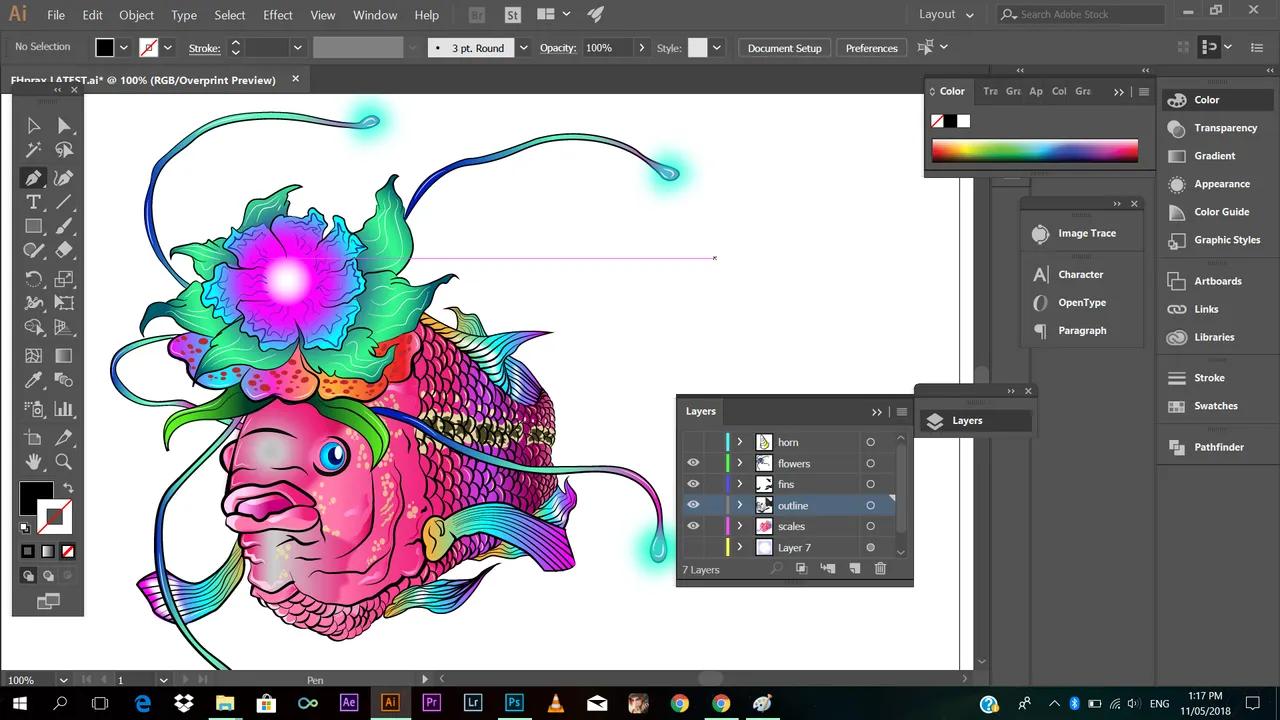
And adding the horns! I think @slothicorn may like this one, to know that he had cousin fish, haha
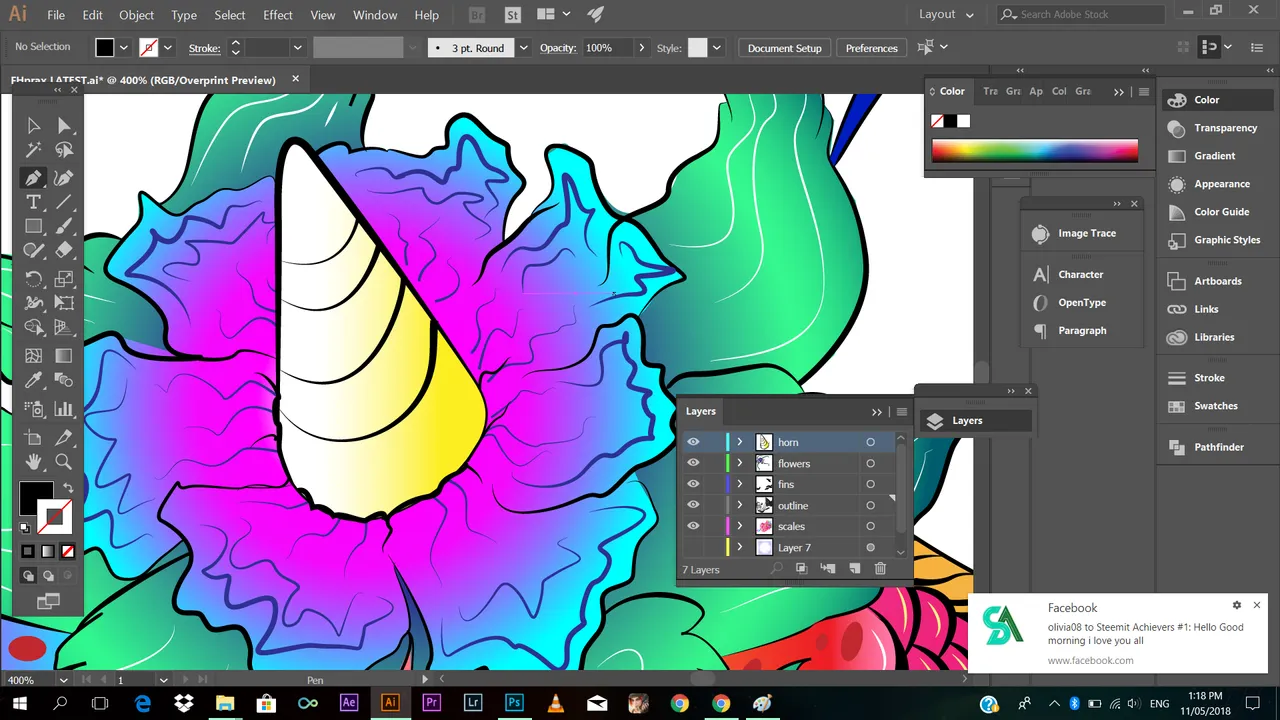
And lastly I've Imported it Adobe Photoshop CC, and added a background and particles to make it more magical, and ready to save
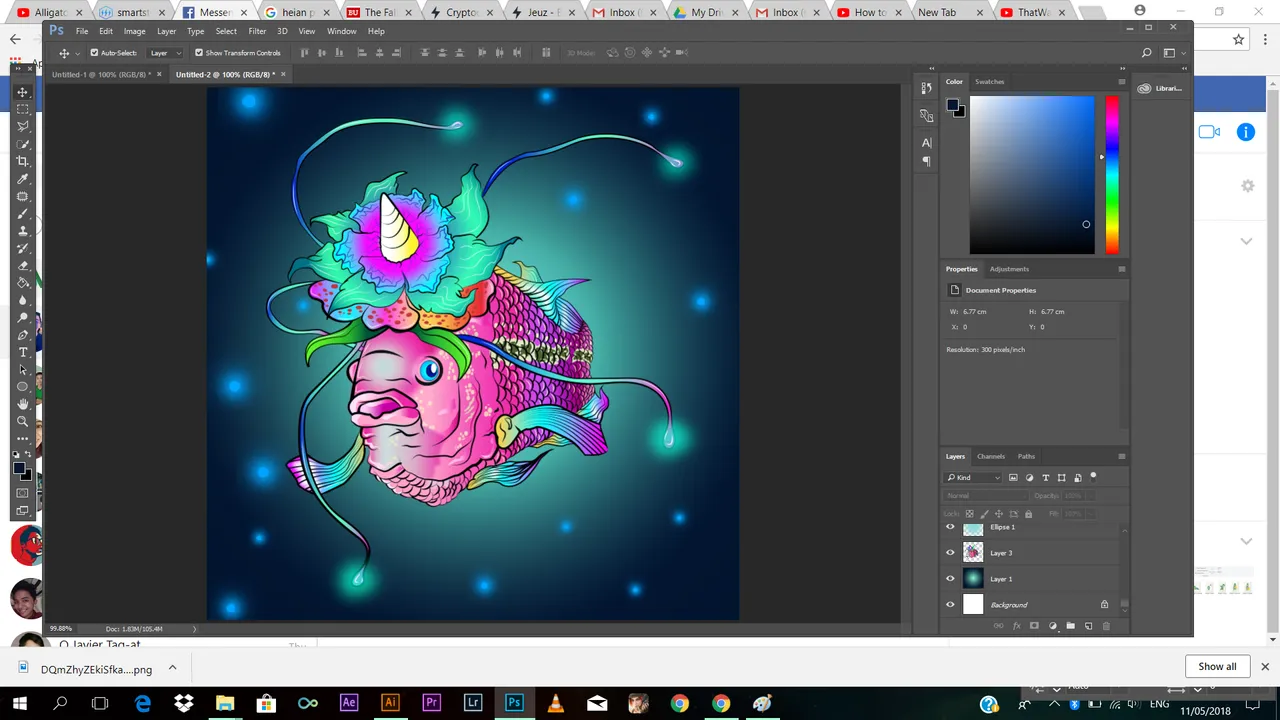
Sometimes it just takes one little step to start a change and starts from yourself. That's all guys, hope you learned something. Thanks for checking this post, have a nice day ahead.

This work is licensed under a
Creative Commons Attribution 4.0 International License.
And you can check this awesome bloggers ✍
@mikaelasinsuat4
@dandalion
@qyugmo
@ishanvirtue
@ediah
@jgonzalez2134
@looserwin
@kennik
Please do support
@slothicorn
@sndbox
@surpassinggoogle
@steemgigs
@steemph
@stateofthearts
@steemitachievers
@steemitfamilyph
@artzone
